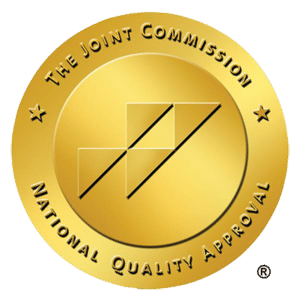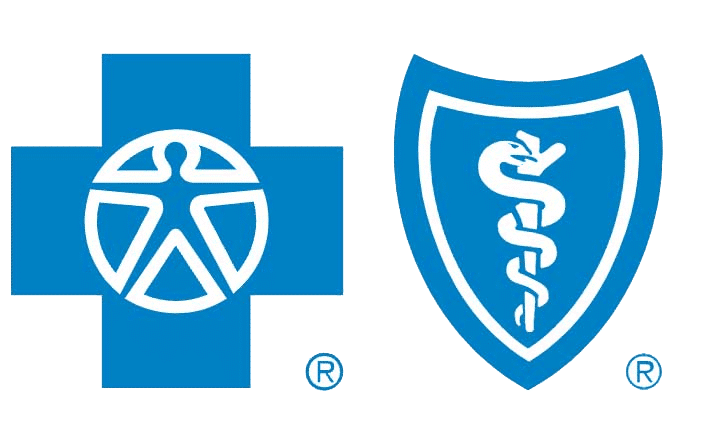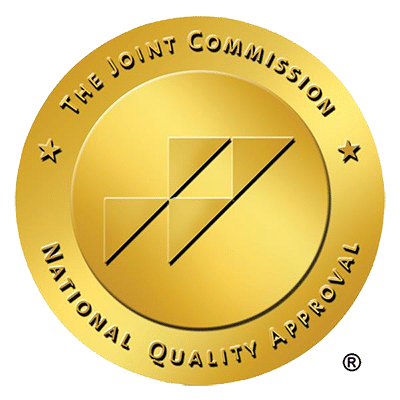Why are opioids addictive? The simple yet profound answer lies in their powerful influence on the brain’s natural reward system. This article cuts through the complexity, zeroing in on how opioids commandeer brain receptors and manipulate dopamine levels to foster an intense cycle of craving and dependence. Here, we peel back the layers of opioid addiction, from the initial misuse to the relentless grip of physical dependence, arming you with knowledge and strategies for intervention.
Key Takeaways
- Opioids trigger changes in the brain’s receptors and dopamine release, leading to addiction by mimicking natural rewards and pleasure, causing chronic use to potentially incite irreversible brain damage.
- Opioid addiction often starts with legitimate medical use but can progress to addiction through tolerance development and physical dependence, leading to difficult withdrawal symptoms and the risk of overdose.
- Treatment for opioid addiction is most effective with a combination of medication-assisted treatment, including FDA-approved medications like methadone, buprenorphine, and naltrexone, and behavioral therapies that address psychological aspects of addiction.
The Science Behind Opioid Addiction
Opioids have a powerful impact on the brain, triggering changes that lead to addiction. When opioids bind to and activate receptors in the brain, they initiate a cascade of biochemical processes that lead to feelings of pleasure, mirroring rewards for life-sustaining activities. This pleasure drives individuals to continue using the drug, leading to repeated exposure and eventually, addiction.
Furthermore, chronic opioid use can lead to long-term abnormalities and structural changes in the brain, which can cause irreversible damage and reinforce the addiction cycle. This knowledge of opioids’ impact on the brain paves the way for further scrutiny of how opioid receptors and dopamine release contribute to addiction.
Opioid Receptors
Opioid receptors are a key player in how opioids affect the brain. These receptors, which include:
- mu receptors
- kappa receptors
- delta receptors
- nociceptin receptors
mediate different hormonal, neurotransmitter, and drug responses, as well as sensory perceptions. When opioids like heroin and oxycodone attach to these receptors, they trigger biochemical processes that lead to feelings of pleasure.
Interestingly, different subtypes of these receptors are involved in different physiological effects. For instance:
- Mu receptors are involved in analgesia, euphoria, and dependence
- Kappa receptors are tied to analgesia and dysphoria
- Delta receptors are tied to analgesia and reduced gastric motility
Comprehending the roles of these receptors is vital in the development of pain relief drugs that come with a lesser risk of addiction.
Dopamine Release
The release of dopamine is another pivotal factor in opioid addiction. Activated by opioids, the mesolimbic reward system releases dopamine in an area of the brain called the nucleus accumbens, resulting in feelings of pleasure. This dopamine release creates a memory association with the environment where drug use occurs, which can lead to repeated drug use and cravings.
The ventral tegmental area (VTA), a part of the brain’s reward system crucial for dopamine release, plays a key role in determining opiate motivation. Specific receptors and neuronal signaling control whether an opioid-naive or opioid-dependent individual will feel motivated to use opioids. The interaction between dopamine release, opioid receptors, and the brain’s reward system forms a potent cycle contributing to opioid addiction.
The Progression of Opioid Use
Opioid addiction, a form of drug addiction, often begins innocently enough with the legitimate medical use of opioids to treat pain. Opioids are able to activate the brain’s natural reward system, which in turn encourages continued drug use, especially in the initial stages. The pleasure obtained from opioid use can bolster the urge to persist in drug use. However, repeated misuse of prescription opioids can lead to the development of a substance use disorder, with addiction being the most severe form of such a disorder.
The development of tolerance further complicates the situation. As tolerance builds, higher opioid dosages are needed to manage pain effectively, increasing the risk of accidental overdose and further addiction. This progression of opioid use from initial medical use to addiction involves two critical stages: the development of tolerance and physical dependence.
Tolerance Development
An unfortunate side effect of continual opioid use is the development of opioid tolerance. This phenomenon involves the body adapting to the presence of opioids, requiring higher dosages to achieve the same effect as before. Over time, the brain requires higher doses to experience the same effect, due to a decrease in the release of endorphins.
Moreover, opioid use alters the neurotransmitter noradrenaline, which regulates wakefulness, breathing, and blood pressure. These alterations contribute to changes in brain chemistry that foster tolerance. It’s important to understand tolerance because it signals the onset of the subsequent phase in opioid addiction: physical dependence.
Physical Dependence
Physical dependence on opioids is a dangerous consequence of long-term use. It manifests as the body’s reliance on these substances to function normally, with long-term use escalating the risk of dependence. Even when opioids are taken as prescribed, long-term use can lead to dependence.
Dependence is characterized by severe withdrawal symptoms upon cessation or reduction of use, driving individuals to continue usage not for euphoria but to avoid discomfort. This can be a daunting stage to navigate, as withdrawal symptoms can be severe and potentially life-threatening, necessitating medical intervention for safe discontinuation of opioid use in cases of drug abuse.
This dependence, coupled with the fear of withdrawal symptoms, often keeps individuals trapped in the cycle of opioid addiction.
Want to Learn More about Opioid Addiction?
Our addiction recovery team is here 24/7 to answer your questions or to get you help.
Opioid Withdrawal Symptoms
Withdrawal symptoms are a key facet of opioid addiction that can be particularly distressing. Early symptoms include:
- agitation
- anxiety
- muscle aches
- insomnia
- runny nose
- sweating
- yawning
- diarrhea
- dilated pupils
- goosebumps
- nausea
- vomiting
These symptoms usually start within 12 to 30 hours after the last use, depending on the opioid, with symptoms increasing in severity over a period of 72 hours. The intensity of these symptoms varies from person to person based on their level of physical dependence, and complications can include aspiration, dehydration, and electrolyte disturbances.
Comprehension of these symptoms is vital as it assists individuals and healthcare professionals in better managing the detoxification process.
Risk Factors for Opioid Addiction
Knowing the risk factors for opioid addiction is vital for successful prevention strategies. Certain genetic variants, especially those affecting opioid and dopamine receptors, have been linked with an increased risk of opioid addiction. These genetic polymorphisms can impact how individuals respond to opioids, influencing variations in pain relief and addiction propensity.
Behavioral traits and untreated psychiatric disorders also contribute to one’s risk of developing opioid addiction. For example, traits such as reward deficiency, sensation-seeking, and impulsivity have been identified as intrinsic contributors to an individual’s risk. Untreated psychiatric disorders can also contribute to the risk of opioid misuse or addiction.
Social and environmental factors also play a role in the risk of opioid addiction. For instance, exposure to a social or family environment that encourages misusing substances can heighten the risk of developing opioid addiction. Additionally, the initiation of substance use during adolescence significantly increases the risk of developing severe addiction and other health morbidities.
Consequences of Opioid Addiction
Opioid addiction can have devastating consequences. It can lead to significant health problems, disability, and an increased risk of relapse, overdose, and death. Developing a tolerance to opioids can also lead to opioid-induced hyperalgesia, where patients experience increased sensitivity to pain, often resulting in severe pain.
Further, those using opioids for pain management face a heightened suicide risk, necessitating improved knowledge and monitoring of these patients. Middle-aged individuals with substance abuse and psychiatric comorbidities are more likely to die from opioid-related causes. The addiction also contributes to a range of health risks, including injuries and infectious diseases. Impaired judgment due to opioid use increases the risk of contracting infectious diseases like HIV due to risky behaviors like unprotected sex.
Overall, the consequences of opioid addiction are far-reaching and severe, affecting not only the individuals but also their families and communities.
Treatment Options for Opioid Addiction
When it comes to the most effective approach to treat opioid addiction, a combination of medication and behavioral therapies is often recommended. Medications like methadone, buprenorphine, and naltrexone can help to relieve cravings, alleviate withdrawal symptoms, and prevent relapse.
Behavioral therapies and long-term treatments such as self-help groups, outpatient counseling, and checking for co-occurring mental illnesses are also crucial in enhancing the psychological rehabilitation of individuals with opioid dependence. The role of mental health services administration in providing support and resources for these treatments cannot be overstated.
The blend of medication and behavioral treatment proves most effective in treating opioid use disorder, and an integrated approach is indispensable for long-term management and recovery.
Medication-Assisted Treatment
Medication-assisted treatment (MAT) is a crucial part of treating opioid use disorder. Three U.S. Methadone, buprenorphine, and naltrexone are commonly used FDA-approved medications to treat this disorder. They are recognized by the Food and Drug Administration for their effectiveness..
These medications, known as opioid drugs, act on the same brain structures and opioid receptors as addictive opioids. However, they do so in ways that provide protective or normalizing effects, ranging from alleviating cravings without producing euphoria to blocking the highs from opioid use. Knowledge of how these medications function is essential to both healthcare providers and patients in managing opioid addiction.
Behavioral Therapies
In addition to medications, behavioral therapies play a significant role in treating opioid addiction. Counseling offers a safe space to address the impact of addiction and fosters the development of healthier coping strategies through individual, group, and family counseling sessions.
Diverse therapeutic forms like Cognitive Behavioral Therapy (CBT), Motivational Interviewing (MI), and the Community Reinforcement Approach (CRA) play a significant role in treating opioid addiction. These therapies provide personal benefits such as:
- fostering positive outlooks
- healthy habit formation
- relapse prevention planning
- coping skills to manage stress and avoid reliance on opioid use.
Prevention Strategies
Preventing opioid addiction requires proactive strategies. One of the most straightforward strategies is to carefully follow doctor’s orders and take prescription medications, such as prescribed opioids, only as directed to prevent misuse and potential addiction.
Considering non-drug treatments for pain management is another useful approach. Options like:
- acupuncture
- biofeedback
- electrical stimulation
- massage therapy
- meditation
- physical therapy
- psychotherapy
- relaxation therapy
Seeking non-opioid medications or treatments to relieve pain can offer effective pain relief without the risk of addiction. Additionally, this approach can significantly reduce the risk of developing an addiction.

The Impact of Opioid Addiction on Society
The societal impact of the opioid epidemic is staggering. In the U.S alone, the economic burden of the opioid crisis was estimated at $1.02 trillion in 2017, encompassing the costs of opioid use disorder and fatal opioid overdose. The highest per capita economic costs were predominantly in the Ohio Valley and New England regions, highlighting geographic patterns in the economic toll of the epidemic.
In addition to the economic costs, the healthcare system has experienced significant strain from opioid-related overdoses. Over 660,000 hospitalizations in the US occurred between 2001 and 2012, leading to more than $700 million in annual healthcare costs. The opioid crisis also imposed an estimated annual cost of $72.5 billion on healthcare infrastructure.
Beyond the financial costs, the opioid epidemic has severely impacted U.S. life expectancy. Over 800,000 Americans died from drug overdoses between 1999 and 2020, with many of these deaths being opioid-related. The profound societal impact of opioid addiction is evident, underscoring the need for ongoing research, prevention, and treatment initiatives.
Summary
In conclusion, opioid addiction is a complex issue that touches on various aspects of society. It is a crisis rooted in the nuances of human biology, genetics, behavior, and social environments. The science behind opioid addiction, the progression of use, and the societal impact of this crisis are multifaceted and require a comprehensive approach for effective treatment and prevention. As we continue to battle this epidemic, it is our collective responsibility to educate ourselves, support research efforts, and advocate for effective policies and interventions to curb the devastating consequences of opioid addiction.
Frequently Asked Questions
What is the most common form of treatment for opioid dependence?
The most common forms of treatment for opioid dependence are medication-assisted treatment (MAT) which includes medications such as methadone, buprenorphine, and naltrexone, along with counseling and behavioral therapy. These options have been shown to reduce opioid use, related symptoms, the risk of infectious disease transmission, and criminal behavior associated with drug use.
What are the main factors that contribute to opioid addiction?
Opioid addiction is influenced by genetic variants affecting opioid and dopamine receptors, behavioral traits like reward deficiency and impulsivity, and social factors like exposure to a drug-using environment and early substance use. These factors together increase an individual’s risk of addiction.
What are some strategies for preventing opioid addiction?
To prevent opioid addiction, it’s important to follow doctor’s orders for medication, consider non-drug treatments for pain, and explore non-opioid options. Taking medication only as prescribed is crucial for preventing addiction.
What is the societal impact of opioid addiction?
The societal impact of opioid addiction includes significant economic costs, strain on healthcare systems, and reduced life expectancy. The U.S. has experienced an estimated economic cost of $1.02 trillion in 2017, significant strain on healthcare systems from over 660,000 opioid-related hospitalizations between 2001 and 2012, and over 800,000 deaths from drug overdoses between 1999 and 2020.
Related Posts

Critical Signs of Meth Addiction: Symptoms & Support Options
Wondering what are the warning signs of meth addiction? Early detection can be lifesaving. From drastic behavioral swings to ‘meth mouth,’ these symptoms are alarming

Essential Guide on How to Help Someone with Meth Addiction
If you’re seeking to understand how to help someone with meth addiction, this article is your immediate support guide. Encountering meth addiction within someone you

Recognizing the Warning Signs of Marijuana Addiction
Knowing the signs of marijuana addiction is vital for recognizing a serious problem that often goes unnoticed. In this article, we address the real indicators

Decoding Opioid Addiction Statistics: A Harsh Reality Check
What do the numbers say about the opioid crisis? Diving into opioid addiction statistics offers a sobering reality check: a surge in usage and deaths

Effective Strategies on How to Prevent Opioid Addiction
The key to preventing opioid addiction starts with being informed. If you’re seeking concrete steps on how to prevent opioid addiction, this article is for

How to Help Someone with Cocaine Addiction Effectively
Wondering how to help someone with cocaine addiction? It can feel overwhelming, but your role is crucial. In this guide, you’ll find understandable and practical















